I live on a hill overlooking a beaver marsh in southern Maine. This is the view from the front of the house. Two acres of field and blueberry barrens sloping down to wetlands. If I were a landscape painter I couldn’t have imagined a better composition. Those 4 large oaks define the space and draw the eye to the focal point of the water.

The marsh continues in an arc to the right. I call it the north point. This view is a short walk through the woods.
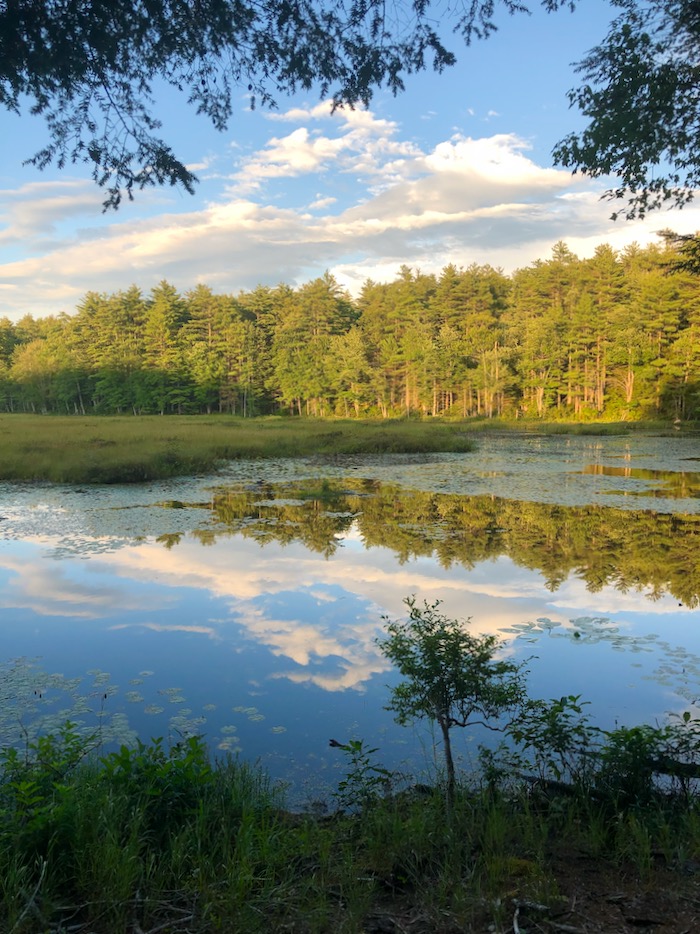
Spreading out behind and around the house are 4,000 acres of protected forest.
As you can imagine, there is a lot of wildlife. There are the obvious large mammals and birds that are well-known and easily seen – eagles, deer, squirrels, porcupines, herons, turtles. There are the more cautious animals that are sometimes espied – hares, snakes, grouse. There are nighttime animals that I know are there but don’t see – skunks, bobcat, muskrats, raccoons. There are things I hear, birds and insects, that I have yet to identify. In fact, most of what surrounds my home I have no clue about. I am trying to learn. I have field guides and books. Binoculars. I observe.
Possibly my favorite essay written by Karen Pryor is in her book On Behavior. In A Gathering of Birds, she writes about a summer that she spent in Vermont. While she was getting to know the birds in her backyard, they were getting to know her. We humans think of ourselves as the observers, and that each species lives its own, mostly oblivious life about the others around them. In reality, there are communities everywhere. How do we fit in? The animals around us are trying to figure that out, too.
The other morning, around 7 am, I sat down at my breakfast table by the window looking out the front field. I saw this. A coyote.
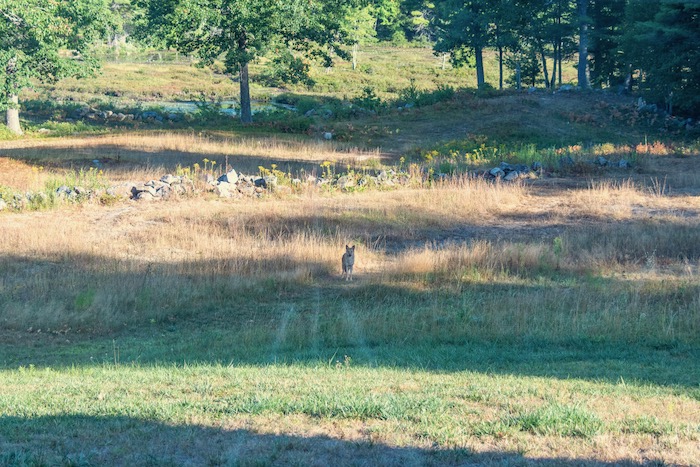
The coyote saw me. And was curious. Came closer. We watched each other for awhile, then s/he trotted off.
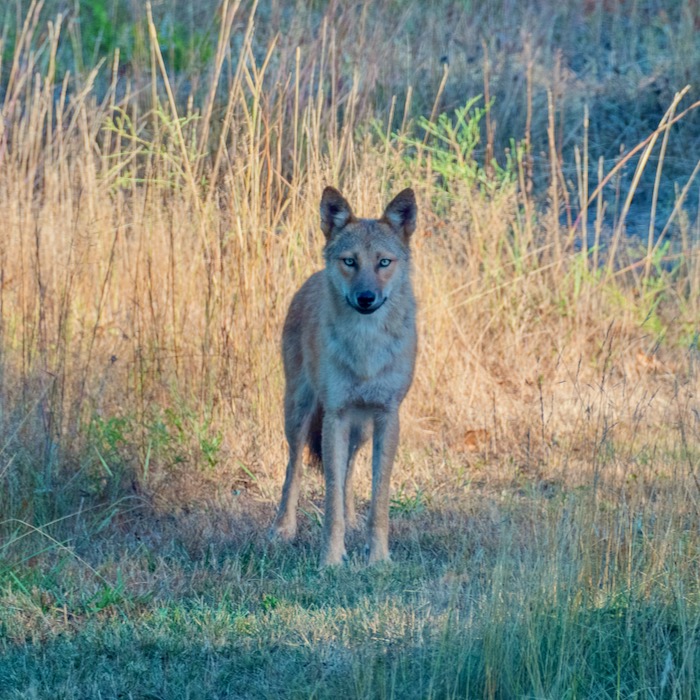
This field and the woods are the territory of a porcupine that I call Po. She likes to sleep in the oak trees.
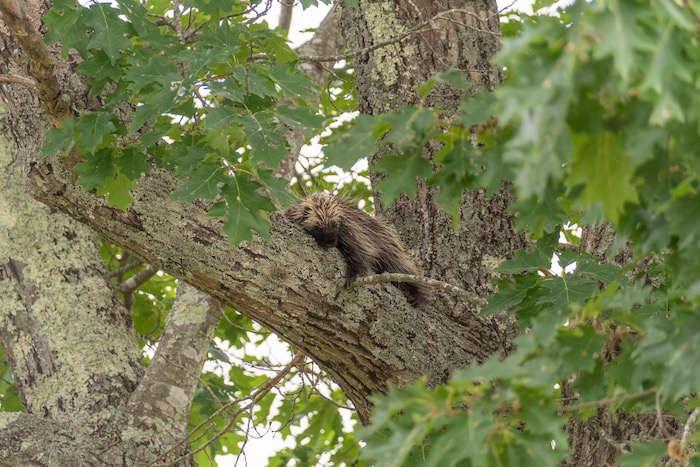
When the backyard was blooming in clover, she came to graze. She is well aware that a little dog pees inside of that fence. Po knows that I live here, too. She probably has been watching me more than I’ve been watching her. It’s not easy for me to see her in the trees. Her vantage point makes her the observer of my daily activity, whereas I’m mostly oblivious of hers.

A Great Horned Owl lives on the North Point. This one definitely has been paying attention to us. Why she flies off when I walk under her tree is a mystery to me. I’m sure she knows that I can’t climb up to reach her. I’ll be reading more about owl behavior to try to find an answer to this question.
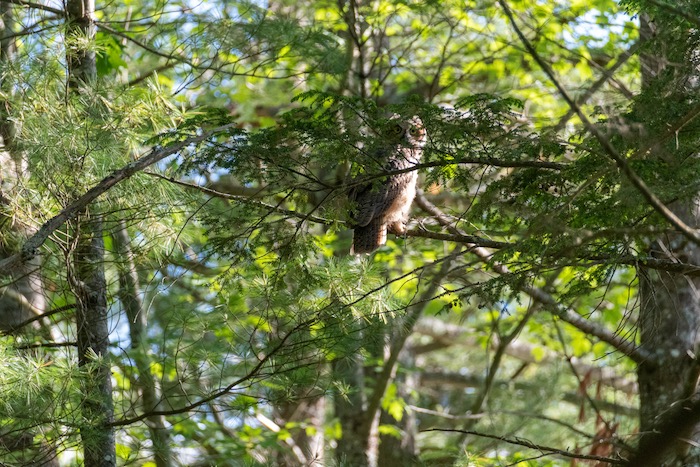
The one animal that I don’t think observes me – or who simply doesn’t care – is the dragonfly. I am a perch to eat a meal on. No more, no less. Then again, perhaps it chooses to use my knee because it knows I’m not a threat?

To find out more about the creatures that live here, Steve set up a wildlife cam. It faces a stream (currently dry) that crosses a trail that heads out into the big woods.
We can watch Po on her nightly loop of her territory. Now we can observe her, if only for a few seconds.
We see the bobcat on the cam, too. This image was taken at the same time of the evening that Steve and I were sitting out on our porch talking about how pretty it is here. No doubt this cat knew exactly where we were. Who is observing who?
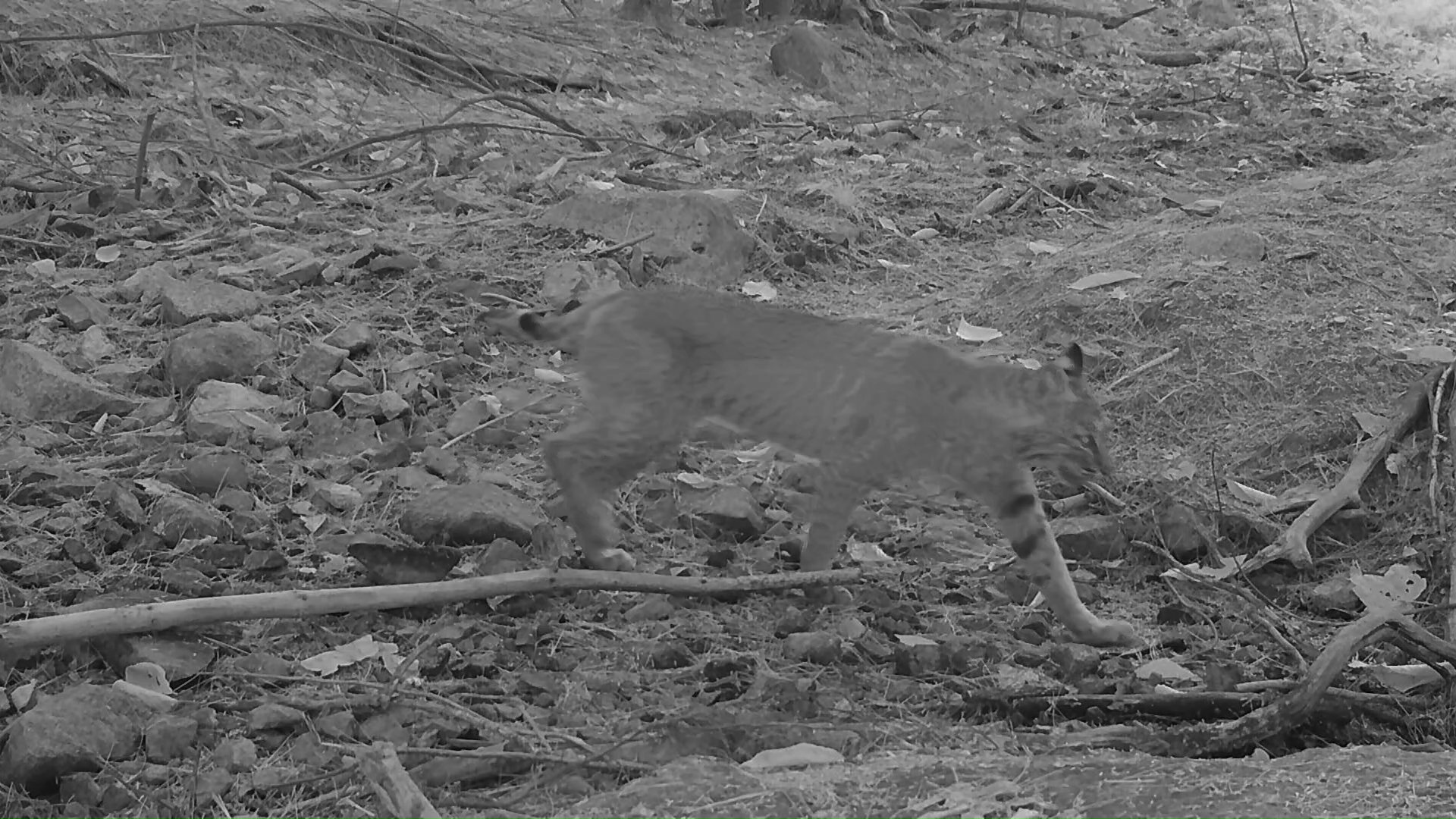
In Karen’s essay, she writes about the interactions between all of the things that live on a plot of land, especially the ones who call that place home. Species talk to each other, tell each other what they know, and warn the community if there’s something new in the mix. I like to keep that interconnectedness in mind as I make my way around my small corner of this earth.
I bring that perspective to my time with horses as well. Last week, when I was hand-grazing Tonka in the field at Greystone, he brought his head up, alert. Then relaxed and went back to grazing. What was that about?
There was a deer at the edge of the field. I wouldn’t have seen it if Tonka hadn’t let me know that it was there. It took Tonka a split second to recognize it for what it was – a familiar part of the community. The deer looked at Tonka, and then looked at me. Tonka was okay, I was not. The deer disappeared into the woods.
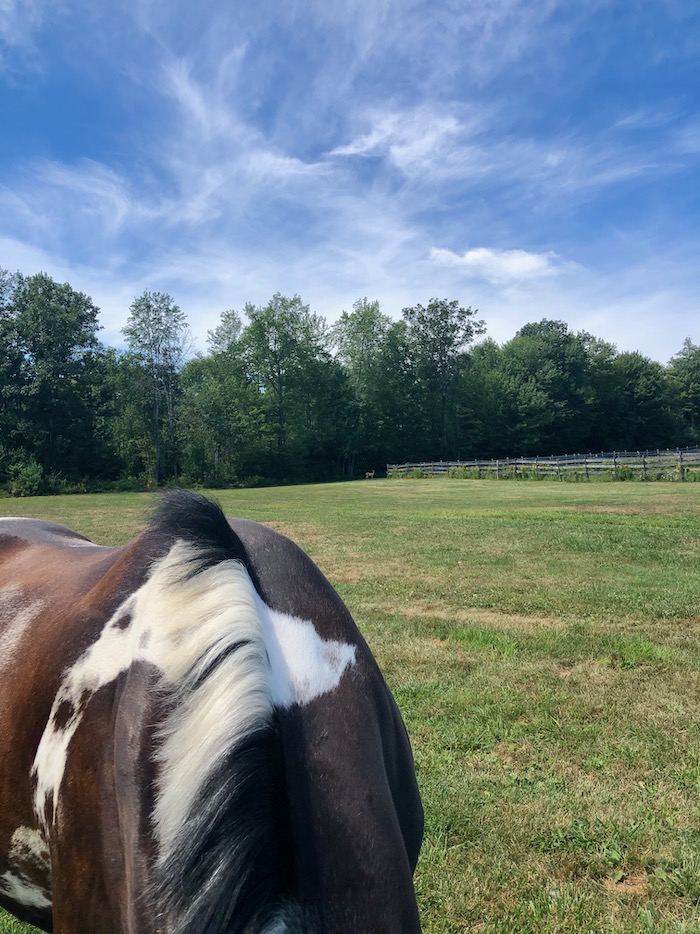
Animals are observers. They’re far better at it than us dull and egocentric humans. Your horse is always aware of who is part of their circle and who is not. Being social animals, that awareness is taken to the micro-level. They closely and without letup observe members of their herd. Including their people. That horse that appears to be without a care, dozing in the sun? They are only like that because they are observing the community around them, from the birds, to your footsteps, and are clued into the world around them.
We are both the observers and the observed. Who’s been watching you lately? Has it become a conversation?
Note: if you like this post, please consider sharing it with others. There are social media links below. Thanks!


I have been in my bed for three weeks with Covid-19. Somewhat recovered, I ventured out yesterday to visit my chickens and was immediately greeted by our resident raven. It was unusually loud and active and attentive— I guess it missed me!
A raven that likes you is in your community! How wonderful!!!
I enjoyed this post very much! Too many people are so human-centric that such observations would never occur to them, and they would mostly scoff if informed of them. They are the poorer….
Love the picture of the Coyote. Enlarging the photo showed the beautiful piercing eyes, keeping an eye on you. So much fun to pay attention to ones surroundings. Especially in their own territory.
Thanks for sharing.
Those eyes are something! Intelligence shining out of them. A bit unnerving to be observed by them.
I hope that coyote isn’t checking out Scooter.
I’m sure that they know about each other, at the least via scent and defecation. Scooter doesn’t go outside unless I’m there to watch over him!